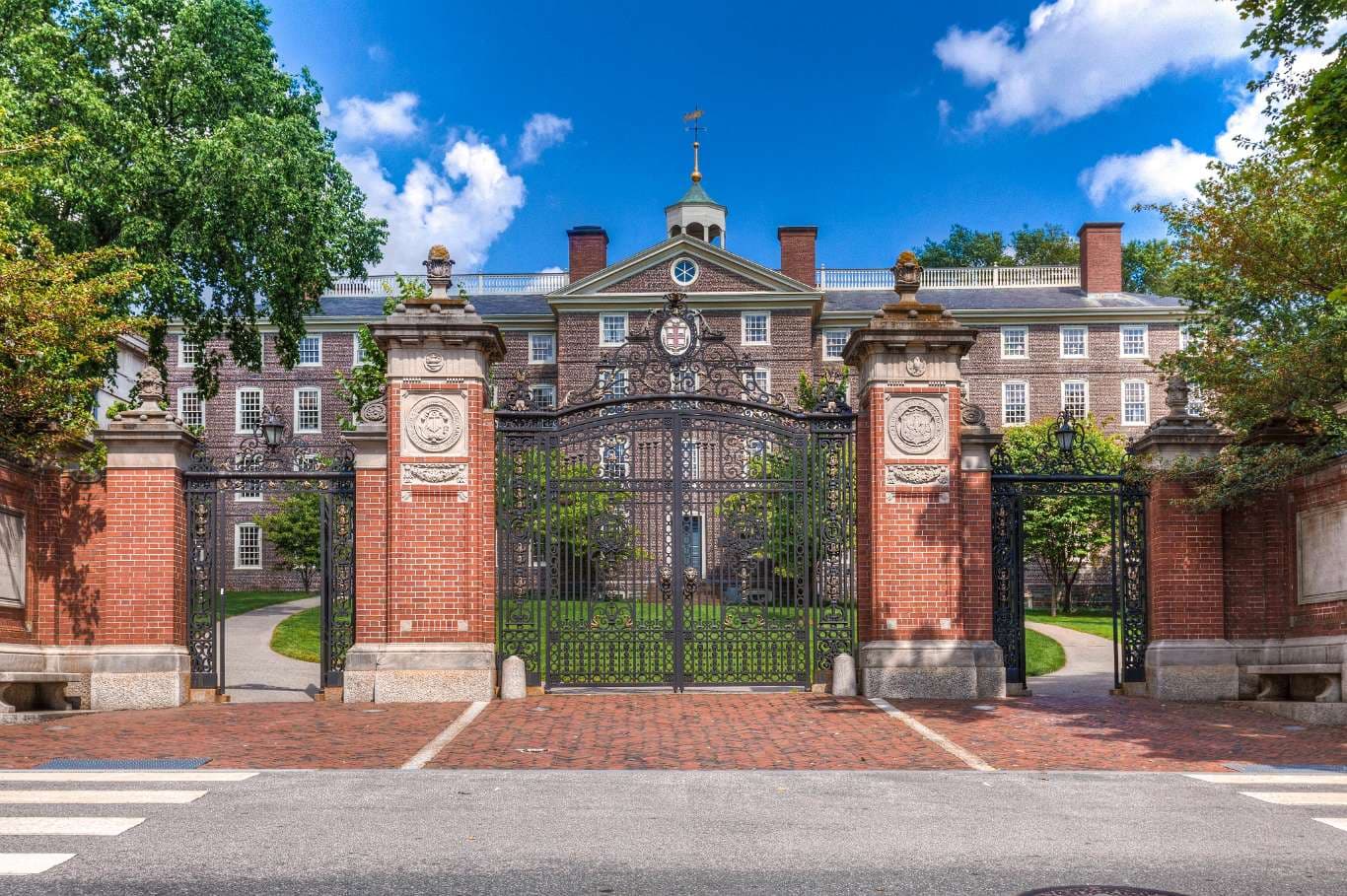Brown Acceptance Rate at 5.65% for Class of 2029


Arkesh P.
Chief Operating Officer
Summary
Brown University’s Class of 2029 overall acceptance rate stands at 5.65%, based on 2,418 admits from 42,765 applicants. The Early Decision (ED) round saw a significantly higher admit rate of 17.9%, whereas Regular Decision (RD) remained much more selective, at 4.01%. This cycle marks the largest gap between ED and RD acceptance rates in recent years, following Brown’s return to requiring standardized test scores.
With Ivy Day rolling around, Brown has now completed its admissions cycle for the Class of 2029. Out of 42,765 applicants, Brown accepted 2,418 students for an overall acceptance rate of 4.52%. Below is a fuller breakdown of acceptance rate results and trends at Brown, to help prospective applicants better understand the school's evolving admissions landscape.
Class of 2029 Overview
| Admissions Round | Applicants | Admitted | Acceptance Rate |
|---|---|---|---|
| Early Decision (ED) | 5,048 | 906 | 17.9% |
| Regular Decision (RD) | 37,717 | 1,512 | 4.01% |
| Overall | 42,765 | 2,418 | 5.65% |
Key Trends and Insights
- The Regular Decision acceptance rate increased slightly from 3.92% to 4.01%, reflecting a decrease in applications in the RD admission round.
- The Early Decision acceptance rate increased noticeably from 14.4% to 17.9%. This marks the highest ED acceptance rate since Class of 2023.
Broader Admissions Trends:
- Consistent Overall Acceptance Rate: Despite a major increase in the ED acceptance rate, the overall acceptance rate has remained relatively consistent throughout the years, hovering between 5-7%
- EA Advantage: The gap between the RD and ED acceptance rates has consistently widened over the years. This year marks the largest difference between the two acceptance rates since at least Class of 2023, with a difference of +13.89.
- Shift Back to Testing Requirements: Several Ivies, such as Yale, Brown, Dartmouth and Harvard, all reinstated testing requirements for the 2024-25 application cycle. This new testing mandate could have potentially led to the decrease in applicants.
Brown's admissions remain fiercely competitive, demanding not only exceptional academic performance but also evidence of meaningful engagement and genuine passion. Applicants should focus on standing out authentically rather than merely fitting into a perceived mold.
Brown's Regular Decision Acceptance Results
Regular Decision Results: Class of 2029 vs 2028
| Admission Round | Class of 2029 | Class of 2028 | % Change |
|---|---|---|---|
| Applications Received | 37,717 | 42,654 | -11.57% |
| Applications Accepted | 1,512 | 1,623 | -6.84% |
| RD Acceptance Rate | 4.01% | 3.92% | +2.30% |
Similar to the acceptance rates of other Ivy Leagues, Brown's acceptance rate continues to be exceptionally competitive. With that said, the RD acceptance rate has increased this year to 4.01%, from last year's 3.92%.
Both the total number of RD applicants and the number of admitted students decreased. However, the number of RD applicants decreased at a higher rate of 11.57%, which resulted in the overall increase in RD acceptance rate.
Despite the slight increase in acceptance rate, Brown continues to be one of the most competitive schools in the US.
Brown Early Decision Acceptance Results
Early Decision Results: Class of 2029 vs 2028
| Admission Round | Class of 2029 | Class of 2028 | % Change |
|---|---|---|---|
| Applications Received | 5,048 | 6,244 | -19.15% |
| Applications Accepted | 906 | 898 | +0.89% |
| ED Acceptance Rate | 17.9% | 14.4% | +24.31% |
The ED acceptance rate increasing noticeably from last year's 14.4% to this year's 17.9%. This is because the number of admitted students is similar to last year's, while the number of ED applicants to Brown decreased by 19.2%.
This makes it the second year in a row where the total number of ED applicants has gone down, and the lowest total number of applicants since Class of 2024.
- Higher Acceptance Rates: Early Decision applicants typically enjoy higher acceptance rates compared to Regular Decision.
- Demonstrated Interest: Applying early shows Brown your strong interest in joining their academic community.
Historical Trends
Historical Acceptance Rates at Brown
| Class of | Total Applications | Total Accepted | Total Acceptance Rate | RD Acceptance Rate | ED Acceptance Rate |
|---|---|---|---|---|---|
| 2029 | 42,765 | 2,418 | 5.65% | 4.01% | 17.9% |
| 2028 | 48,898 | 2,521 | 5.2% | 3.92% | 14.4% |
| 2027 | 51,302 | 2,609 | 5.1% | 3.9% | 13% |
| 2026 | 50,649 | 2,546 | 5% | 3.6% | 15% |
| 2025 | 46,685 | 2,537 | 5.5% | 4% | 16% |
| 2024 | 36,794 | 2,533 | 6.9% | 5.4% | 17.5% |
| 2023 | 38,674 | 2,551 | 6.6% | 5.2% | 18.2% |
- Academic Excellence: Maintain top grades and a high GPA.
- Strong Essays: Use your essays to showcase your unique voice and story.
- Leadership and Extracurriculars: Demonstrate meaningful engagement outside the classroom.
- Test Scores: If submitting, aim for high SAT or ACT scores within or above Brown's reported range.
Final Thoughts
If you're a prospective student thinking about Brown, be sure to check out our full guide on how to get into Brown!
Otherwise, congratulations to all students admitted to Brown's Class of 2029 — your achievement reflects remarkable dedication and excellence.
For those considering applying to Brown in the future, the admissions landscape is increasingly competitive, making strategic preparation essential.
Crimson Education specializes in helping ambitious students navigate admissions to top universities like the Ivy League, Stanford, MIT, Johns Hopkins, UCLA, and more. Each student is matched with a highly qualified consultant who guides everything from student growth and academic support, to application strategies and more, all tailored to individualized needs and goals and reflecting each students authentic strengths and passions.
To get started, please schedule a consultation with one of Crimson Education’s admissions consultants. We want to learn more about your goals and challenges and share our insights on your best next steps.
To find out more about Crimson and our dedication to helping students realize their fullest potential, read about our story, see our record of student results, and sign up for some of our upcoming webinars and events.


